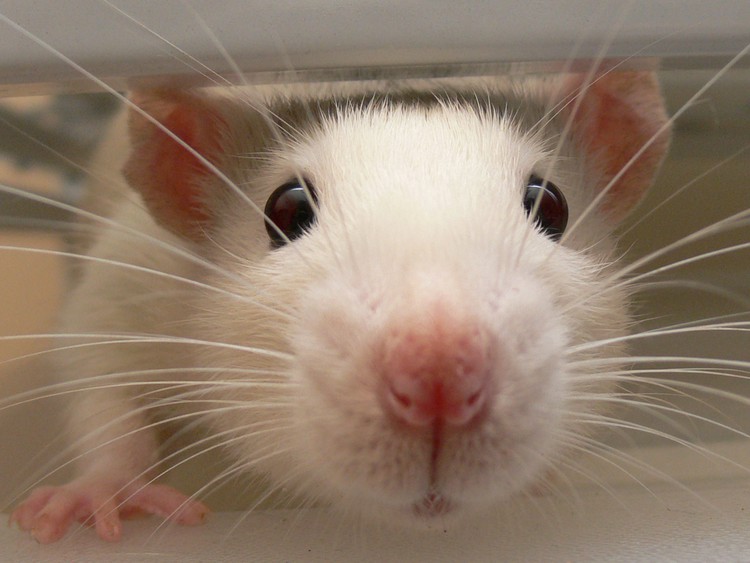
Some people keep rats as pets. They are more affectionate and engaging than, for example, hamsters. But wild rats in Cape Town are a pest. Photo: Rebecca Lai via Flickr (CC BY 2.0)
23 February 2018
About five years ago, reports started circulating in Cape Town about a growing rat problem. People, especially in low-income areas like Khayelitsha, complained about rats eating their food, damaging their possessions and biting them at night. Rats were seen in greater numbers in the city centre and the Western Cape Premier, Helen Zille, was bitten on her toe one morning when collecting her newspaper. Perhaps coincidentally, the City Council allocated more money to rodent control.
Like most cities in the world, the City of Cape Town relies mainly on poison when controlling rats. But rat poison is also dangerous to people (especially children who ingest it accidentally), pets and animals such as owls that can die after eating poisoned rats.
In 2015, Khayelitsha Environmental Health (EH) (a municipality unit) tried to shift away from poison by running a public works program (PWP) in which unemployed people were hired to set cage traps for rats inside people’s homes. This project proved popular but was halted after the South African National Council for Societies for the Prevention of Cruelty to Animals (NSPCA) objected because the rats were subsequently drowned. The PWP resorted to setting poisoned bait in people’s homes instead.
Death by drowning is no doubt a terrifying way to die, and it takes several minutes to drown a rat. Yet death from rat poison is also cruel and a poisoned rat can take days to die – which is why the NSPCA itself is opposed to the use of poison, including against pests. It is likely that death by poisoning is actually worse for the rat than death by drowning – and in this respect, the NSPCA’s action against the PWP can be seen as something of an own goal. But for the NSPCA it is unacceptable to replace one cruel method (poison) with another cruel and illegal method (drowning). For the EH, the NSPCA’s position failed to grapple with the limited tools they had at their disposal to deal with rats – or the demands from people living in the area for assistance in dealing with rats.
In 2017, University of Cape Town (UCT) researchers ran a survey in Site C, Khayelitsha, asking people about their experience of rats and what they thought about the drowning and poisoning of rats. It found that most households reported serious rodent infestation and that people agreed that workers should be allowed to trap and drown rats. Those who said they were concerned about rat poison killing other animals like cats and owls were especially likely to support the cage-trapping and drowning of rats. This indicates strong support for the EH’s approach in the area. Those who believed that drowning was painful for the rat were less likely to agree with cage-trapping and drowning (suggesting support for the NSPCA’s position) but this was very much a minority position.
Despite the clash of values, there was some middle ground in that both sides accepted that death by poison and drowning was cruel. The EH continued its search for poison-free solutions, even considering a novel proposal to transport the captured rats to a raptor rehabilitation centre where they could be euthanized by CO2 gas and fed to the raptors. This idea, which appeared on the face of it to be doubly good for conservation (poison free and turning rats into food for raptors), unfortunately proved impractical and with animal welfare concerns of its own (notably the stress for the rats of being caged and transported). Yet it is interesting that this proposal was seriously entertained and is indicative of the EH’s commitment to finding poison-free and more humane ways of dealing with rats.
The NSPCA is also making an effort to deal with the problem. UCT researchers were told that “The Cape of Good Hope SPCA is working towards a practical solution in finding methods to euthanize large numbers of captured rodents in an attempt to ensure animal welfare is maintained, thus assisting the community members of Khayelitsha.” Hopefully this project will bear fruit. Ultimately, though, the best way of dealing with rodent infestation is to reduce the supply of their food by having better waste removal services, and improving human housing.
The UCT research is available here: http://www.cssr.uct.ac.za/cssr/pub/wp/410